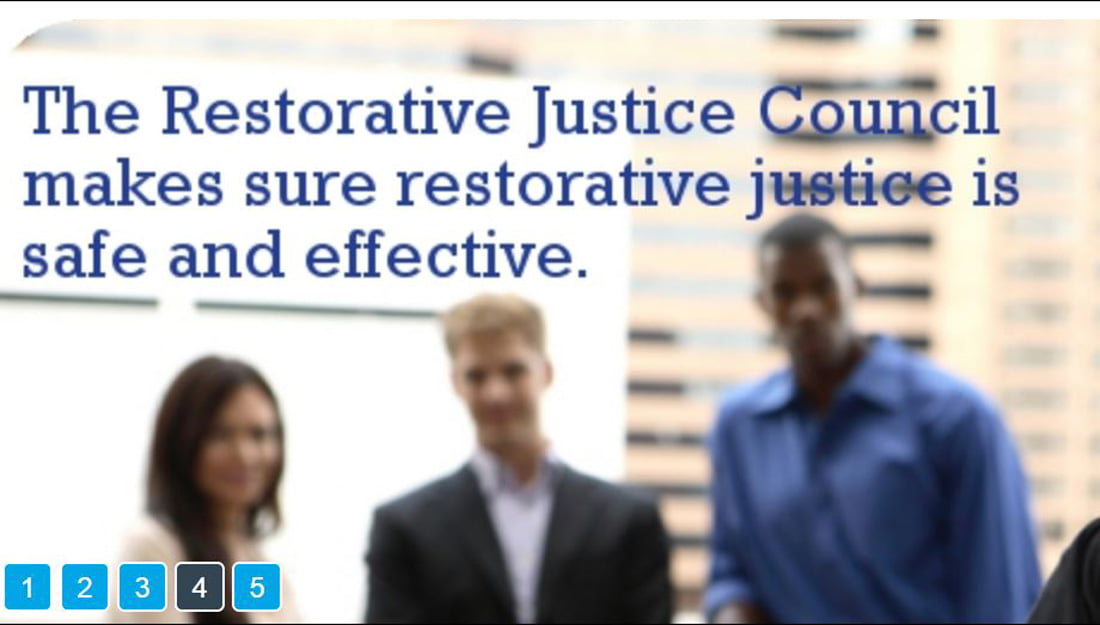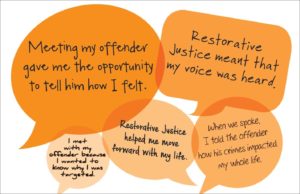Jon Collins is the CEO of the Restorative Justice Council. He is the latest contributor in a new guest blog series setting out the top three priorities for the new Justice Secretary. You can follow @jonbcollins and @RJcouncil on Twitter.
If I was justice secretary
If I was justice secretary after the forthcoming general election I would put restorative justice at the heart of my response to crime. We know that restorative justice works. It improves victim satisfaction, reduces reoffending and saves money. It should be available to every victim of crime, wherever they live and at every stage of the criminal justice system.
[divider]
Priority 1: Embed restorative justice across the justice system
To achieve this I would ensure that access to restorative justice is integral to the justice system. A new Victims’ Law would give all victims of crime the right to access restorative justice, while Community Rehabilitation Companies (CRCs) and prisons would be instructed to assess every offender’s suitability for restorative justice. Restorative justice would also be embedded into the youth justice system, based on the model established in Northern Ireland, and would form the basis of out of court disposals, in order to divert suitable cases from the justice system.
[divider]
Priority 2: Multi-agency restorative justice hubs for every area
This approach would clearly require a significant increase in provision. The funding provided by the current government to Police and Crime Commissioners (PCCs) for restorative justice has been a welcome start, but the next government must go further. As justice secretary, I would look to ensure universal provision of high quality restorative justice by establishing a multi-agency restorative justice hub in every area that would coordinate the provision of restorative justice and ensure that every victim can access restorative justice at the time that is right for them.
This would bring together all the relevant providers in an area – for example probation, CRCs, PCCs, YOTs and the local voluntary sector – to properly coordinate provision and ensure that duplicate referrals do not take place, that gaps in service provision are removed, and that national standards are observed. This would be a cost effective way to boost provision, given anticipated future budget cuts, by using existing local capacity to maximum effect. But further funding would also be required.
[divider]
Priority 3: Use restorative approaches to tackle prison violence
Finally, I would establish the use of restorative practice within every institution in the custodial estate. We know that using restorative approaches is an effective way to manage conflict within institutions and can reduce violence between prisoners and between prisoners and staff. The criminal justice system should embrace this. Staff at every prison and Young Offender Institution should be trained in the use of restorative approaches and HM Inspectorate of Prisons should report on the extent to which they are deployed.
Taken together, these measures would see a step change in the use of restorative justice in the criminal justice system. This would benefit victims, offenders and the wider public. It would have the additional benefit of being popular. Polling shows that 75% of the public think that every victim of crime should have the right to meet their offender. Surely no politician can ignore that level of public support?
The purpose of this blog series is to stimulate a debate about where our criminal justice system should be heading. I’d love to hear your thoughts on what the justice priorities should be. Please use the comments section below or follow the conversation on Twitter, using the hashtag #nextGrayling








